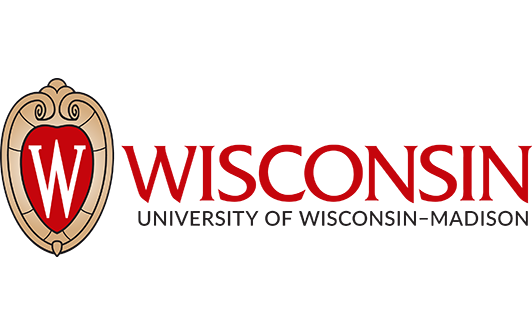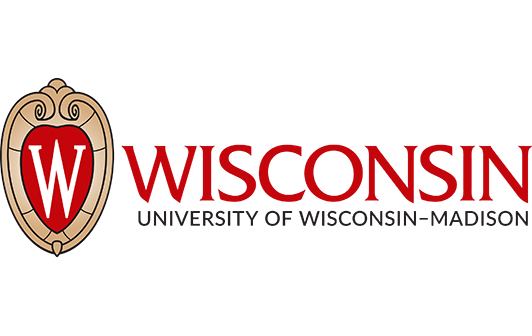
University of Wisconsin-Madison

Salesforce Powers Multiple Recruiting Efforts Across UW–Madison
Similar But Different
One of the longest and deepest traditions surrounding the University of Wisconsin (UW-Madison) is “the Wisconsin Idea”: a guiding principle that spans UW–Madison’s approach to teaching, research, outreach and public service.
Through the strategic deployment of technology, UW–Madison is able to put this foundational idea – with its emphasis on outreach and having an impact on as many people as possible – into practice in several different areas of the university, including the Undergraduate Office of Admissions and Recruitment and the Division of Continuing Studies. While both units focus on recruiting, they had somewhat different needs.
“We’re a very traditional admissions operation,” said Brad Richardson, Associate Director of Information Systems and Technology at UW–Madison, speaking about the Undergraduate Admissions department. “To recruit students, we do high school visits, college visits, call-out campaigns, and other activities, and we do it at a very large scale. We work with a pool of up to 100,000 prospects a year. In the past, we relied on a patchwork of tools and products to handle outreach for undergraduate admissions, but we needed a more full-featured CRM system in place that could meet our needs at scale.”
The Division of Continuing Studies, meanwhile, faced a slightly different recruiting challenge.
“We’re a relatively new division, with a focus on addressing the needs of adults who want to further their education,” explained Alan Ng, Director of Outreach Technology, Division of Continuing Studies. “We had a mission to build new graduate programs from scratch and tap into new markets. So, our question was: how do we even get the first students to talk to us and start building out our enrollment?”
In light of these different use cases, UW–Madison needed to find a solution that was flexible enough to address the distinct needs of two different areas of the university while being scalable enough to be used campus wide.
The Right Choice
After reviewing available offerings, UW–Madison selected Salesforce Education Cloud as the ideal solution.

“Salesforce seemed to be the vendor that could best accommodate two different ways of using the same product in the same instance,” said Ng. “There was an admirable level of flexibility there.”
Working with an implementation partner, UW–Madison successfully deployed Salesforce within a rapid timeframe, including products like Service Cloud, which allows the university to provide unified support across all channels. Premier Success provided additional expert support and help to ensure a smooth rollout, and a Customer Success Architect was crucial to the university’s post-go live success.
“What our selection of Salesforce has shown is that you can deploy it across different areas with very different focuses and it can be successful,” said Richardson. “Salesforce’s flexibility allowed each unit to meet their individual directives and accomplish what campus leadership required of them. For the situation at our university, Salesforce was definitely the right choice.”
Added Ng: “End user adoption of the product has been very high, which I think speaks to the user friendly nature of the Salesforce platform. Poor user adoption is traditionally a leading cause of CRM project failure.”
Multiple Departments, Multiple Benefits
The Office of Undergraduate Admissions at UW–Madison has benefited greatly from using Salesforce to more efficiently reach out and communicate to prospective students.
“Salesforce has really streamlined our contacts with prospects and applicants,” said Richardson. “The key word here is ‘efficiency’: Salesforce lets us interact with large numbers of people on a 1:1 basis. The results speak for themselves – we’re seeing 10% year-over-year enrollment growth in our first-year classes. There are many reasons behind that number, but obviously, Salesforce plays a significant role in helping it happen.”
Meanwhile, the Division of Continuing Studies has seen strong results from its use of Salesforce technology as well.
“Salesforce ensures our recruiters are delivering the right message to the right person at the right time,” said Ng. “We now have 88 graduate programs enrolling 6,000 students per semester. Salesforce absolutely deserves some of the credit for helping us scale up to our current level. In fact, since we’ve had Salesforce in place, the engineering accelerated master’s programs have experienced a 64% increase in leads and a 91% increase in submitted applications.”
“While it’s difficult to quantify the direct business impact of Salesforce adoption, the fact that we can actually measure and report on recruitment work and effectiveness is very valuable to our executives,” said Ng. “They love the numbers and dashboards we can now give them.”
Ng added: “Across all our new graduate programs, we had 1,000 people last year get degrees. Those people walked off into the workforce as transformed adults. We’re very proud of that result – and it all starts with the ability to effectively reach out and enroll those people.”
Summing up the university’s Salesforce experience, Richardson said: “I think it’s been very interesting the way that the Office of Undergraduate Admissions and the Division of Continuing Studies have been able to come together with a common system – especially on such a large campus where there typically aren’t a lot of unified systems. Salesforce helped us meet the individual goals that our units needed to meet, and it has the potential to evolve into something even bigger across the university.”
Ng echoed this theme of continuing evolution. “If you want your institution to survive and thrive for the next 10 or 20 years, you can’t stand still. The education landscape is becoming more competitive, and student expectations are changing. You cannot expect to successfully recruit students if you can’t serve them in the way they expect to be served or with the speed they expect to be served – and that’s precisely what our investment in Salesforce allows us to do.”